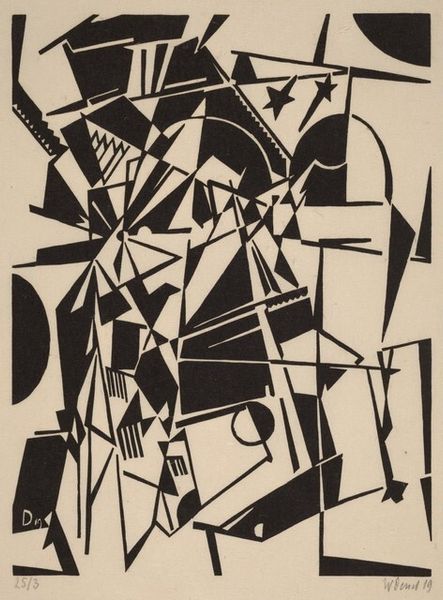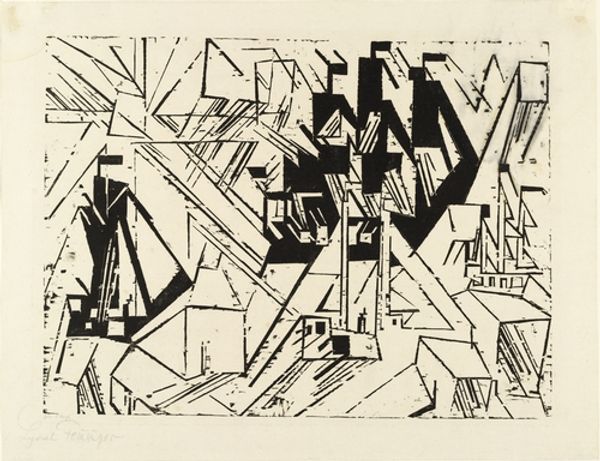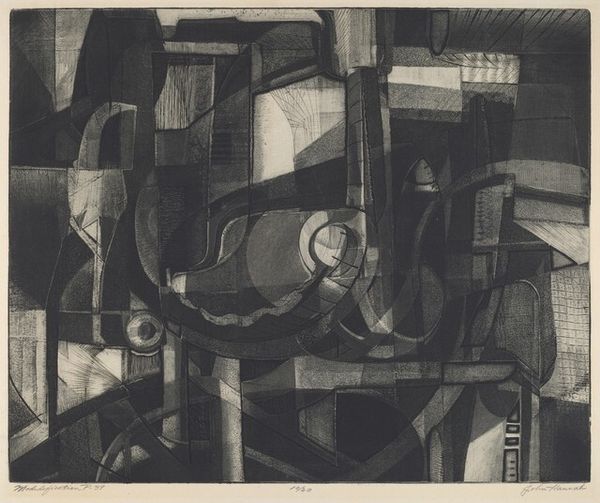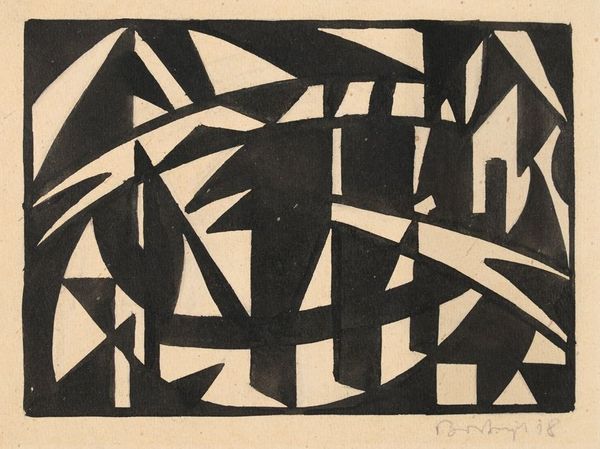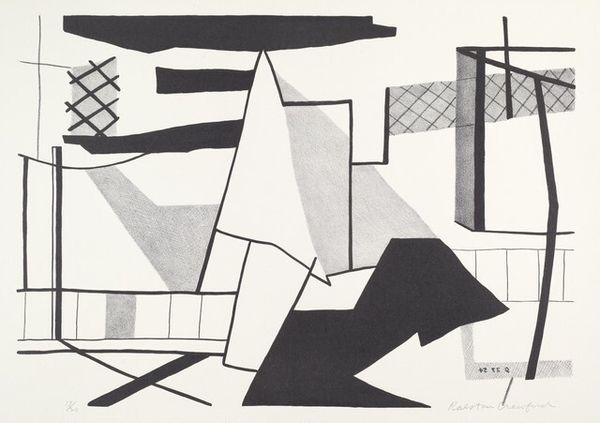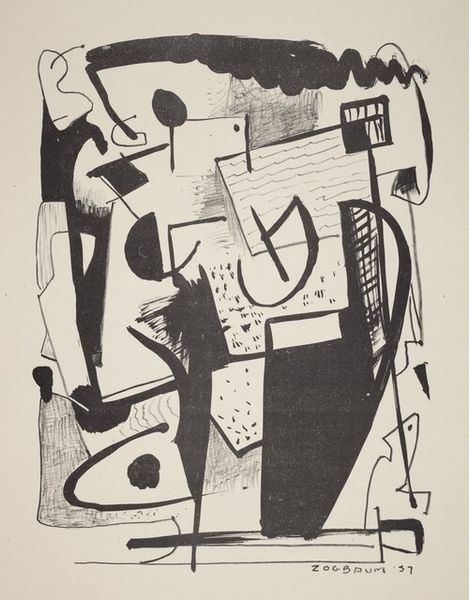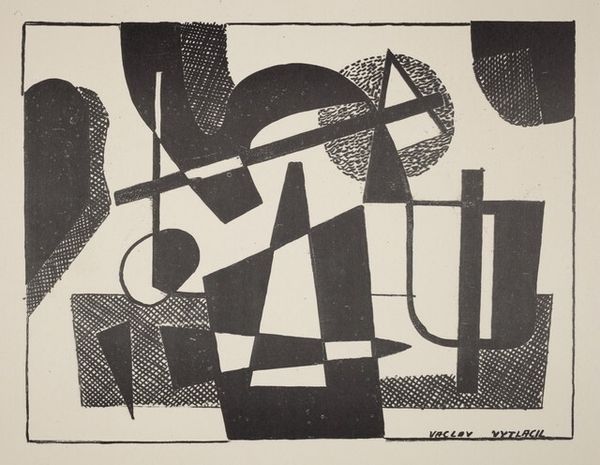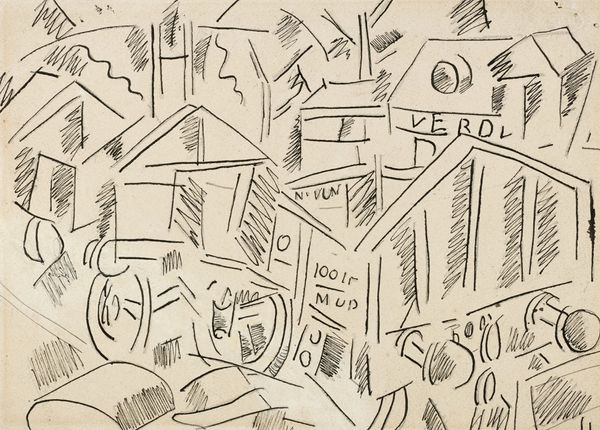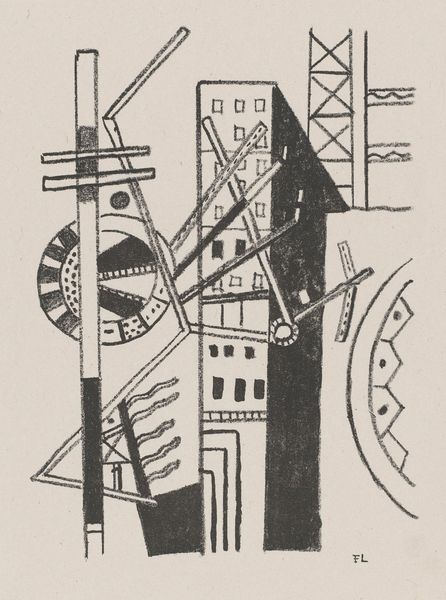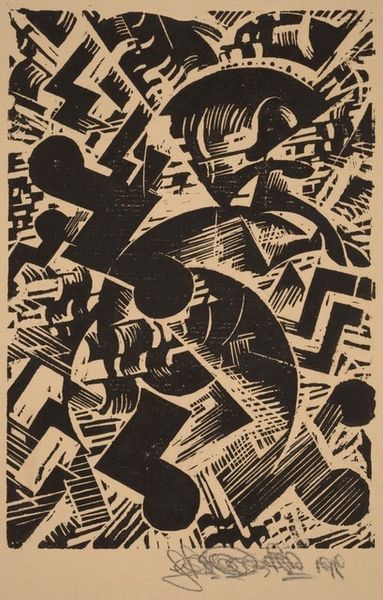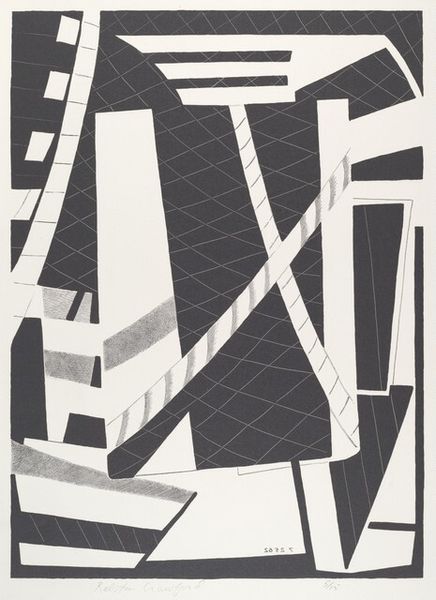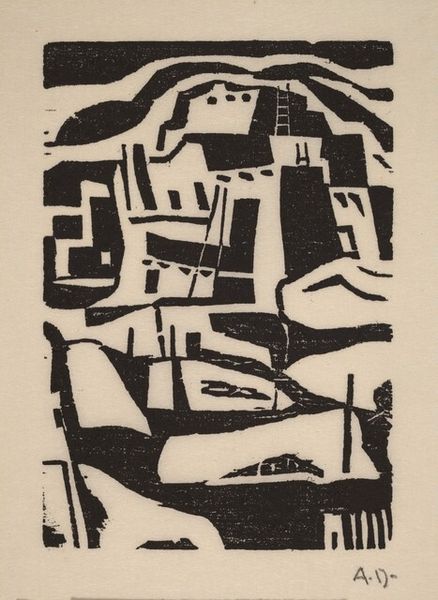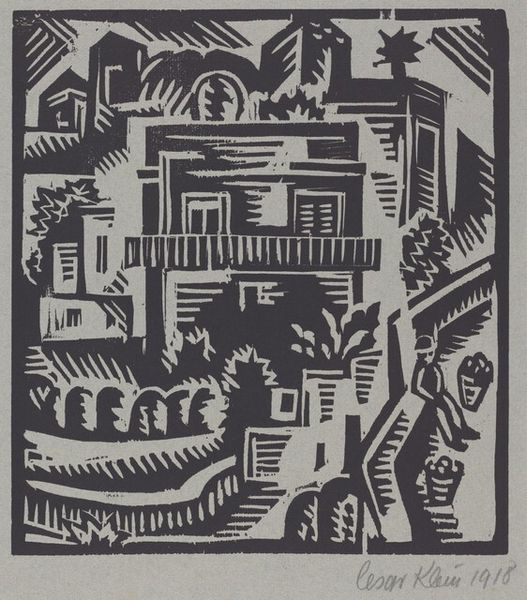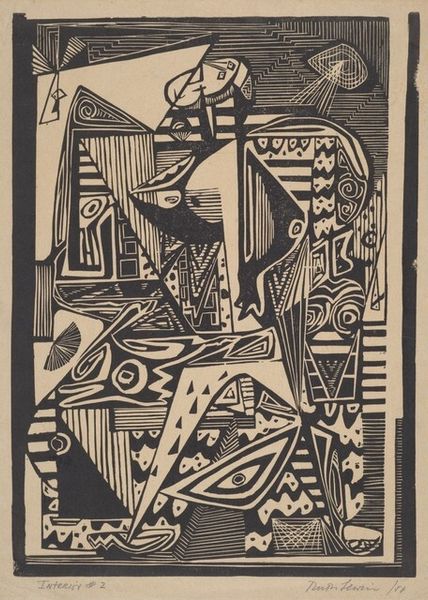
print, woodcut
# print
#
hand drawn type
#
german-expressionism
#
form
#
geometric
#
woodcut
#
abstraction
#
line
Dimensions: block: 18.6 x 22 cm (7 5/16 x 8 11/16 in.) sheet: 26.8 x 30.4 cm (10 9/16 x 11 15/16 in.)
Copyright: National Gallery of Art: CC0 1.0
Curator: Editor: This woodcut, titled *Steile Strasse—Der Strahl*, which translates to “Steep Street – The Ray," was created in 1918 by Walter Dexel. It is strikingly abstract, and at first glance, I mainly see conflicting lines and geometric shapes in contrasting black and white. What do you see in this piece, Professor? Curator: I see the socio-political anxiety of the early 20th century powerfully rendered. The sharp angles and contrasting tones, common in German Expressionism, suggest a world fragmented by war and industrialization. Do you see how the artist disrupts traditional perspective? Editor: Yes, now that you mention it, it’s difficult to find a single vanishing point or a sense of depth. Curator: Exactly! Dexel uses abstraction to challenge conventional representations of reality. The title suggests a street scene, but the distorted forms reflect the instability of Weimar Germany. This "steep street" isn't just a location; it's a metaphor for the difficult path forward for a nation grappling with profound social and political change. How does this contextual reading change your initial interpretation? Editor: It makes it much more poignant! The abstraction now seems to echo a broken society. It’s less about pure form and more about communicating something fractured and uncertain. Curator: Precisely. And notice the "ray" alluded to in the title. It could represent hope or enlightenment, but even that is skewed, interrupted by the chaos surrounding it. This ambiguity speaks volumes about the anxieties of the time. What are your thoughts now? Editor: I hadn't considered the impact of the historical context. It is a valuable insight into interpreting the artist's emotions and sociopolitical critique. Curator: Indeed. It underscores how art serves as both a reflection and a critique of society. The language of form and abstraction can reveal complex and nuanced societal critique.
Comments
No comments
Be the first to comment and join the conversation on the ultimate creative platform.
